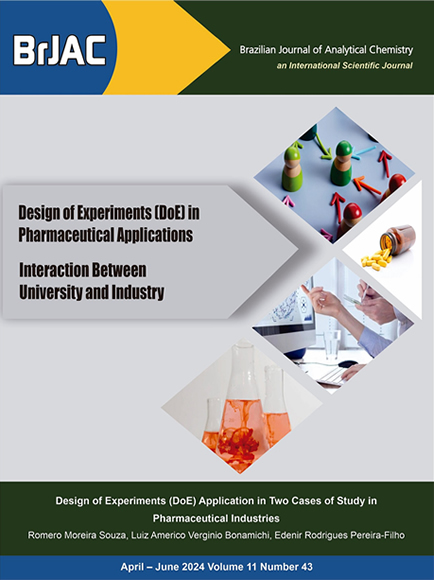
Volume: 11
Issue: 43
Contents:
This issue contains an Editorial by Dr. Marco Aurélio Zezzi Arruda, from IQ-Unicamp (BRA) and the BrJAC’s Editor-in-Chief, Interview with Dr. José Luis Capelo Martinez, Associate Professor at the University NOVA of Lisbon (PRT), a Point of View by Dr. Fabio Augusto, from IQ-Unicamp (BRA), and a Letter by Brazaca, L. C.; Bonacin, J. A.; Muñoz, R. A. A.; Janegitz, B. C.; Carrilho, E. (BRA). This edition also contains 01 Review, 03 Articles and 02 Technical Notes. In addition, the reader will find features on scientific meetings, sponsor reports & releases, book notices and a calendar of events.































